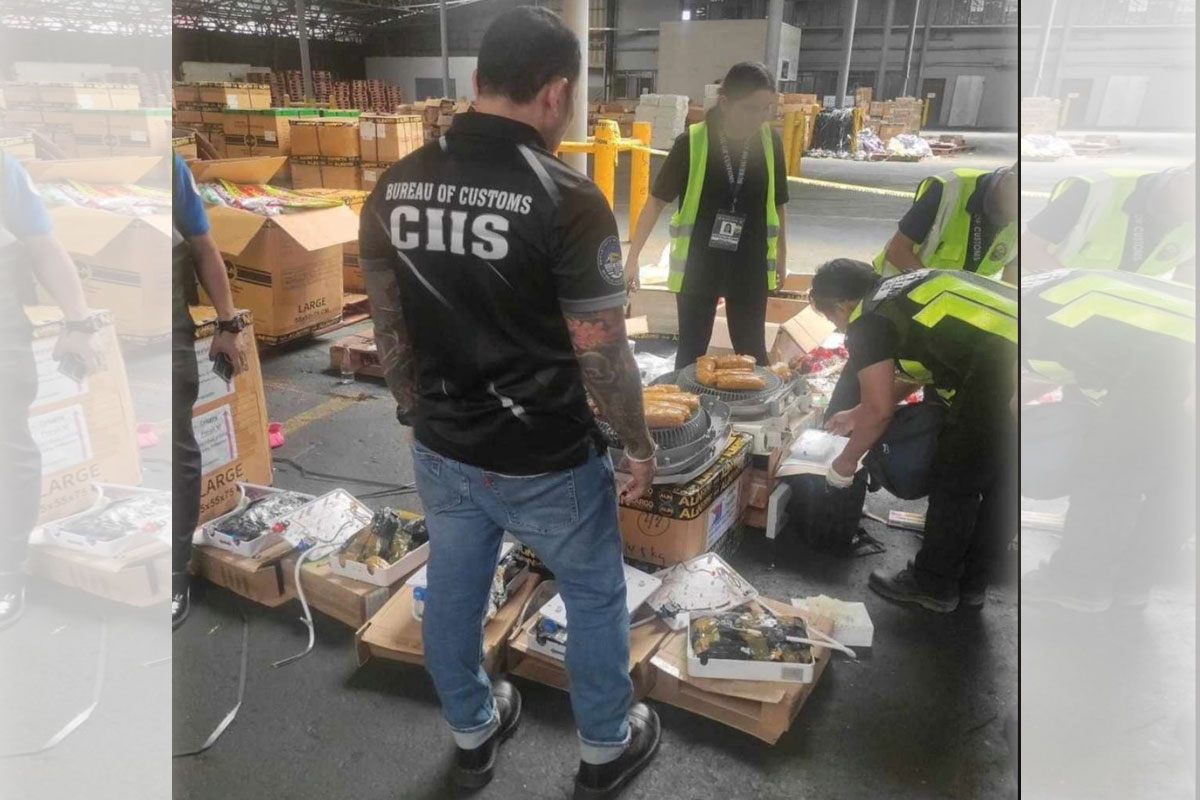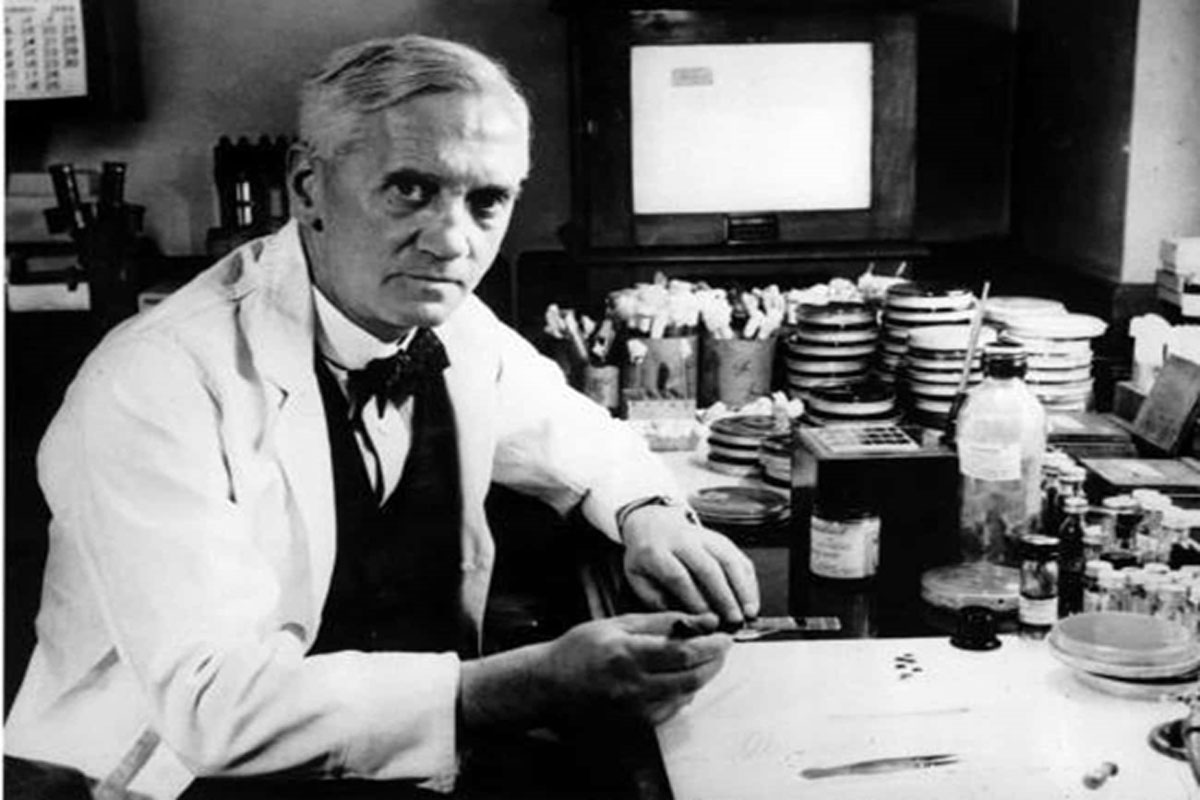
13 Wartime Innovations That Unexpectedly Changed Daily Life
M. Muir
Vote up the most practical wartime innovations.
It’s one of warfare’s paradoxes: from great destruction comes boundless creativity. Human beings have a remarkable capacity to adapt to new situations and develop ingenious solutions to seemingly insurmountable obstacles. We might rightly regard World War I and II as low points in human history, but as this collection shows, in some ways we’re actually better off today because those terrible conflicts took place.
This list examines the circumstances of the wars that caused new ideas to come to the fore, as well as some old ones that would have never taken off otherwise. From the mass production of penicillin to feminine hygiene products – world wars definitely changed our world today.
________________________________________
• Photo: Evan-Amos / Wikimedia Commons / Public domain
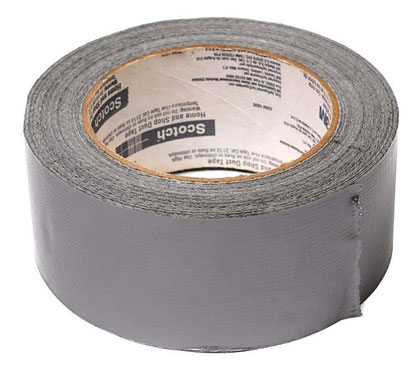 Duct Tape
Duct Tape
Before the advent of duct tape, ammunition boxes were dipped in wax and sealed with thin paper tape with an exposed tab intended for easy opening. The tape’s lack of strength meant these tabs frequently tore off and left soldiers desperately scrambling to open the boxes under fire.
An Illinois ordnance plant worker named Vesta Stoudt had the answer – a durable waterproof tape to seal the ammunition boxes. But her attempts to have the right tape used fell flat, so she took her concerns up the chain of command. All the way up:
You have sons in the service also. We can’t let them down by giving them a box of cartridges that takes a minute or more to open, the enemy taking their lives, that could have been saved… I didn’t know who to write to Mr. President, so have written you hoping for your boys, my boys, and every man that uses the rifle grenade, that this package of rifle cartridges may be taped with the correct tape.
President Franklin D. Roosevelt was suitably impressed and ordered the production of “duck tape” to begin immediately. The tape’s original name came from it being waterproof like the feathers of a duck and made with cotton duck fabric.
• Useful?
• • • Photo: Calibuon / Wikimedia Commons / Public domain
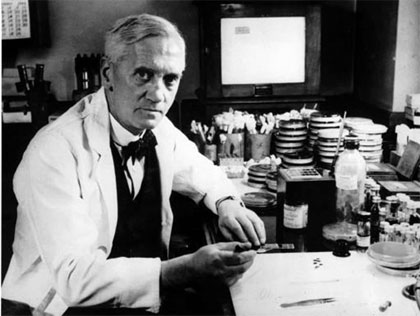 Penicillin
Penicillin
Scottish scientist Alexander Fleming’s accidental discovery of the life-saving antibiotic in 1928 long predates World War II. But it wasn’t until the 1940s that the mass production and awareness of penicillin occurred.
In anticipation of D-Day, the US produced 2.3 million doses. The drug entered into civilian use after the war.
• Useful?
• • Photo: Omegatron / Wikimedia Commons / CC-BY-SA 3.0
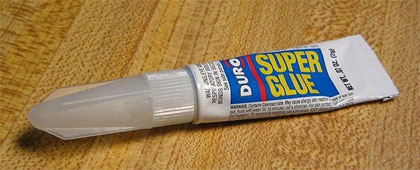 Superglue
Superglue
The formula for the high-strength adhesive was stumbled upon by American inventor Harry Coover, who was attempting to form a clear plastic for use as a gun sight during World War II. The compound, cyanoacrylate, was suitably durable, but quite useless for its intended purpose due to its stickiness. Initially discarded as a failure, Coover once again fell upon his unintended invention some time after the war while researching heat-resistant polymers for jet canopies.
In October 1956, he obtained a patent for “alcohol-catalyzed alpha-cyanoacrylate adhesive compositions” or simply “superglue.”
• Useful?
• • Photo: Stuart166axe / Wikimedia Commons / Public domain
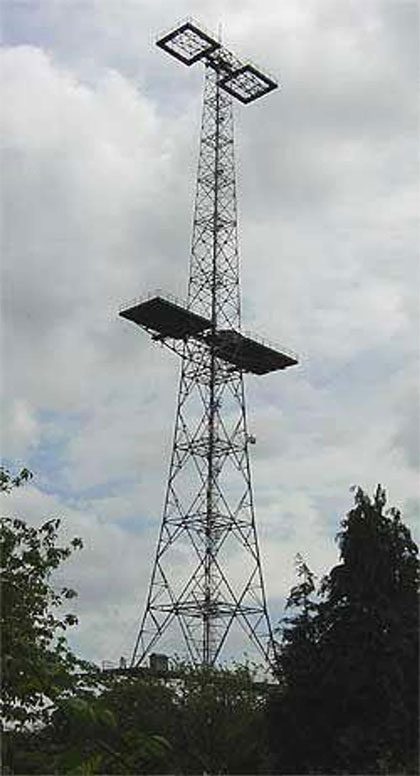 Radar
Radar
The development of radio detection and ranging, or radar, has its roots in World War I. German terror bombing of London achieved little due to the limitations of aircraft available at the time, but the experience had a profound effect on the British government. Between the wars, the British military invested heavily in radar technology to allow fighters a chance to intercept incoming bombers.
These investments in the 1930s more than paid off in the summer of 1940, as the Royal Air Force and the Luftwaffe battled for control over the skies of Britain. Radar stations across the country allowed the RAF to conserve its supplies and strength by knowing when, where, and how many enemy aircraft were coming in. The technology gave the British a crucial edge and prevented a German invasion.
• Useful?
• • Photo: cellucotton products company / Wikimedia Commons / Public domain
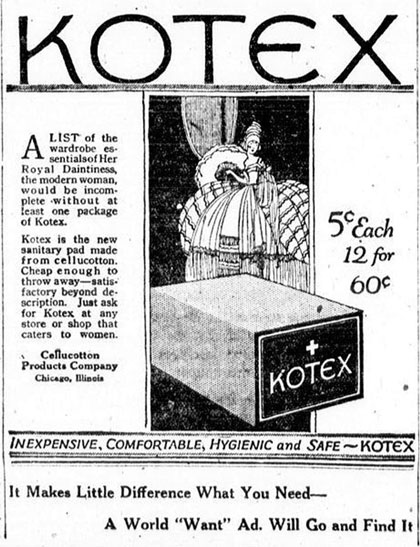 Feminine Hygiene Products
Feminine Hygiene Products
Cellucotton was first developed by the American company Kimberly-Clark at the turn of the 20th century. The highly absorbent material (five times greater than cotton) was in high demand during World War I. The Red Cross nurses who tended wounded soldiers found another use for cellucotton dressings – to manage menstrual cycles. These makeshift sanitary napkins became the basis for modern feminine hygiene products.
After the conflict, the company set about finding a peacetime use for cellucotton, and one enterprising employee suggested making sanitary napkins on a wide scale. Although there was some apprehension over how to market such a product, a catchy name (Kotex is a portmanteau of cotton and texture) and an employee’s persistence saw the pads hit shelves in the early 1920s.
• Useful?
• • Photo: National Archives at College Park / Wikimedia Commons / Public domain
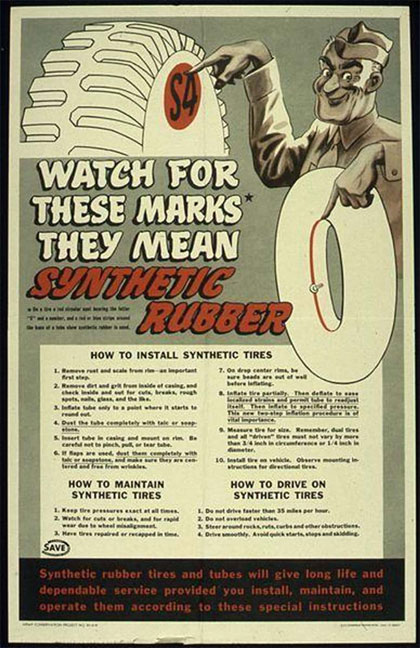 Synthetic Rubber
Synthetic Rubber
One area of great vulnerability to the American effort in World War II was having its supply of rubber cut off. In the 1930s, the American demand for rubber represented about half of the world’s natural supply. When the prospect of war loomed in 1940, the Rubber Reserve Company formed to stockpile rubber. At the same time, substantial efforts were undertaken to develop a synthetic alternative.
With a little more than 18 months’ supply and no existing production facilities, time was of the essence. Fifty production facilities were built while a partnership of public and private research helped iron out a reliable recipe for mass production. The remarkable effort saw production rise from 230 tons annually in 1941 to 70,000 tons monthly in 1945. The impact of this undertaking is still felt in the present day, as about 70% of rubber used in manufacturing processes is synthetic.
• Useful?
• • Photo: HisSpaceResearch / Wikimedia Commons / Public domain
 Tea Bags
Tea Bags
The quintessentially British drink used to be a little more complicated to prepare. The Brits believed tea tasted best when the leaves were removed after a period of infusion, so metal devices such as the tea egg or tea ball became widely used. But the credit for the tea bag and the simplification of a good brew belongs, inadvertently, to an American.
A tea merchant by the name of Thomas Sullivan took to sending samples of his product in little silken bags. Potential customers mistakenly thought the samples were supposed to be infused in the bags, and so the disposable tea bag was born.
The idea really took hold in the trenches of World War I due to the need for convenience and a comforting drink. A German company copied the design for their own “tea bombs” on the other side of the front.
• Useful?
• • Photo: Andy Dingley / Wikimedia Commons / Public domain
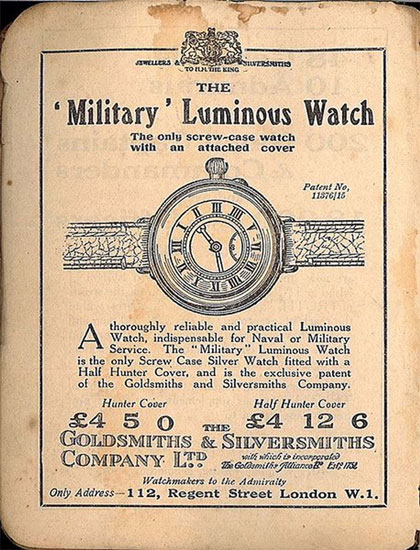 Wristwatches
Wristwatches
A watch worn on the wrist wasn’t exactly a new idea even in 1914; such devices go all the way back to the 16th century. English Queen Elizabeth I received a watch from Robert Dudley in 1571. But it was the trenches of the Western Front in World War I where the common watch truly entered the mainstream.
The need for soldiers to carefully time movements around artillery barrages led to an explosion of another sort – the sales figures of wristwatches.
One brand of luxury watch today, the Cartier Tank, took its name from the French F-17 tank used in WWI.
• Useful?
• • Photo: Unknown / Wikimedia Commons / Public domain
 Plastic Surgery
Plastic Surgery
The first successful instance of plastic surgery was in the aftermath of a naval battle at Jutland in 1916. A British sailor named Walter Yeo was badly injured during the encounter, losing both his upper and lower eyelids. In 1917, he underwent pioneering facial reconstruction surgery performed by Sir Harold Gillies.
The New Zealand-born Gillies is known as the “father of plastic surgery.” Over the course of the conflict, the surgeon and his team used cutting-edge methods to restore both the function and looks of servicemen badly disfigured by the war.
• Useful?
• • Photo: Unknown / Wikimedia Commons / Public domain
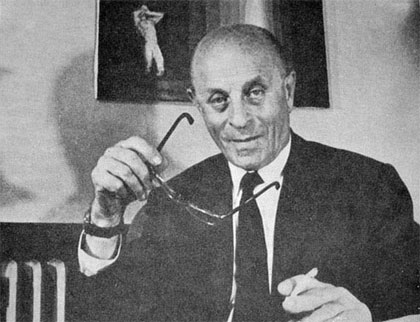 Ballpoint Pens
Ballpoint Pens
In Britain, a ballpoint pen is sometimes referred to as a “biro.” This comes from the pen’s inventor, László Bíró, a Hungarian newspaper editor. His pen first received a patent in 1938, but it wasn’t until World War II that his invention really took off. An earlier version of the ballpoint pen had been developed in the 19th century in the US but failed commercially.
The onset of WWII provided Bíró’s pen with that crucial early customer: the British Royal Air Force. The RAF placed a large order for the pens due to the need for reliable writing instruments that could operate at high altitudes. Bíró would later use the means at his disposal to escape Europe with his family to Argentina in 1943.
• Useful?
• Photo: USDA / Wikimedia Commons / Public domain
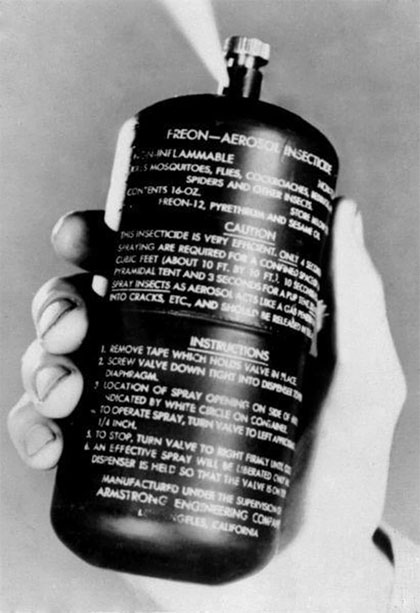 Aerosol Cans
Aerosol Cans
Although the design long predates World War II, that conflict is where the potential of aerosol cans really came into its own. A Norwegian engineer named Erik Rotheim first patented the modern version of the device in 1931, while even earlier precursors stretch all the way back to the 18th century.
The American entry into WWII and the hostile climates of the Pacific Theater created a need for a reliable way of fighting off infectious mosquitoes. Lyle Goodhue and William Sullivan of the US Department of Agriculture developed a small can for spraying insecticides. A wide array of uses for the invention came about in the years following the conflict.
• Useful?
• • Photo: J. Vílchez / Wikimedia Commons / Public domain
 Pilates
Pilates
Joseph Pilates was a German-born circus performer and fitness trainer who had the misfortune of being a German national in England at the outbreak of World War I. Along with other Germans, he was interned at the Isle of Man. To pass the many hours of tedium, Pilates watched the island’s cats closely and was inspired to develop the fitness program that bears his name.
According to Sports Illustrated reporter Robert Wernick, who interviewed Pilates in the 1960s:
The answer came to Joe when he began carefully observing the cats and analyzing their motions for hours at a time. He saw them, when they had nothing else to do, stretching their legs out, stretching, stretching, keeping their muscles limber, alive. He began working out an orderly series of exercises to stretch the human muscles, all the human muscles.
With a quite literal captive audience, Pilates taught his routine to his fellow inmates, and allegedly none of them fell ill when the deadly influenza of 1918-19 reached the island. He was repatriated to Germany in 1919 and emigrated to the US in 1926.
• Useful?
• • Photo: Sargoth / Wikimedia Commons / CC-BY-SA 3.0
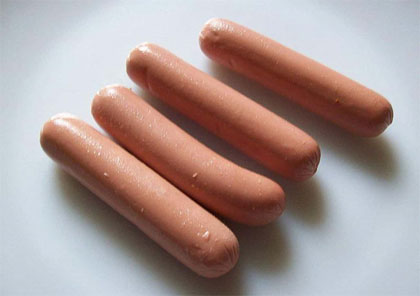 Vegetarian Sausages
Vegetarian Sausages
The British naval blockade of Germany during World War I greatly restricted the flow of supplies into Germany. This led to mass shortages that only worsened over time and in turn inspired attempts to find substitutes with the materials on hand. Konrad Adenauer conducted one such experiment – a vegetarian alternative to that most German of staples, the sausage.
Adenauer was the mayor of Cologne at the time and sought to help alleviate hunger in the city by developing a sausage made from soy rather than meat. The Cologne Sausage was but a small footnote in Adenauer’s story, however; he’d go on to lead Germany in the wake of World War II for 14 years.
Sausages came up again in his electoral campaigning in the 1950s:
Wily Campaigner Adenauer talked of sausages, and brought his audience rising with cheers to their feet when he told them just how much more fat sausage they eat in free-enterprising West Germany than in Socialist Sweden or Denmark.
Useful?
ranker.com











